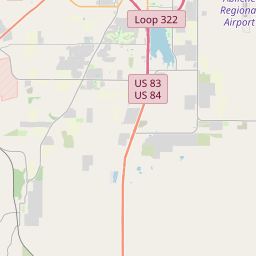Drummond Cemetery
Historical marker location:






In 1879, after her husband's death in Jamaica, Helen Fanny Harris Drummond returned with her children to England. She immigrated with them to the United States in 1885, settling in Brazos County, Texas. In October 1891, she purchased 100 acres in Taylor County, including this site, from the Hammond family. By 1895, she had donated two acres for the Drummond Cemetery; the deed for the property was officially recorded in 1901.
The earliest grave is believed to be that of an infant buried in 1892. Later that year, the infant son of Joseph C. and Nannie Stewart Hammond died and was interred here. His is the earliest marked grave. Helen Drummond's grave dates to 1896. Several of her descendants, as well as those of the Hammonds, are also interred at the cemetery. Of note is the gravesite of pioneer settler Martha Jones Hardin Heffernan (d. 1918), who was living in the area by 1880.
Today, the burial ground, enlarged in 1996, is maintained by a cemetery association of community residents and family members. It remains an important link between early area settlers and the generations that have followed.
Historic Texas Cemetery - 2004
As one of the most visible programs of the Texas Historical Commission (THC), historical markers commemorate diverse topics in Texas history, including: the history and architecture of houses, commercial and public buildings, religious congregations, and military sites; events that changed the course of local and state history; and individuals who have made lasting contributions to the state, community organizations, and businesses.
The world's first rodeo was held in Pecos, Texas in 1883. The event included bronco riding, calf roping, and bull riding.
The early years of Taylor County were characterized by the hardships and challenges faced by the settlers. The area was sparsely populated, and conflicts with Native American tribes were common. However, with the development of the Texas and Pacific Railway in the late 19th century, Taylor County experienced a significant period of growth and development. The railroad sparked economic growth, attracting new settlers and industries to the area.
Agriculture played a vital role in Taylor County's history, with cotton being the dominant crop. The fertile soil and favorable climate allowed farmers to thrive, and cotton production became a major industry in the county. However, the agricultural boom was affected by various factors, including natural disasters and economic fluctuations, leading to both prosperity and challenges for the region's farmers.
Over the years, Taylor County has continued to evolve and diversify its economy. The discovery of oil in the early 20th century led to the establishment of the petroleum industry in the county, bringing new opportunities for growth and development. Today, Taylor County is a thriving community with a diverse economy that includes agriculture, oil and gas, manufacturing, education, and healthcare. The county's rich history is celebrated through its numerous historical sites and museums, providing a glimpse into the past while embracing the progress and future of the region.
Taylor County Timeline
This timeline provides a glimpse into the major events and milestones that have shaped the history of Taylor County, Texas.
- 1858 - Taylor County is officially formed and organized.
- 1878 - Abilene becomes the county seat of Taylor County.
- 1881 - The Texas and Pacific Railway is completed, increasing transportation and trade in Taylor County.
- 1890 - Taylor County population reaches over 8,000 residents.
- 1909 - Abilene Christian College (now Abilene Christian University) is established.
- 1924 - Construction of the Lake Abilene dam begins.
- 1930s - The Great Depression severely impacts Taylor County, causing economic hardship.
- 1950 - Dyess Air Force Base is established, bringing economic growth to the county.
- 1969 - Abilene becomes the first city in Texas to implement the "911" emergency telephone system.
- 1999 - The Taylor County Expo Center opens, becoming a hub for events and exhibitions.
- 2006 - The Abilene Zoo completes a major renovation, enhancing its facilities and exhibits.